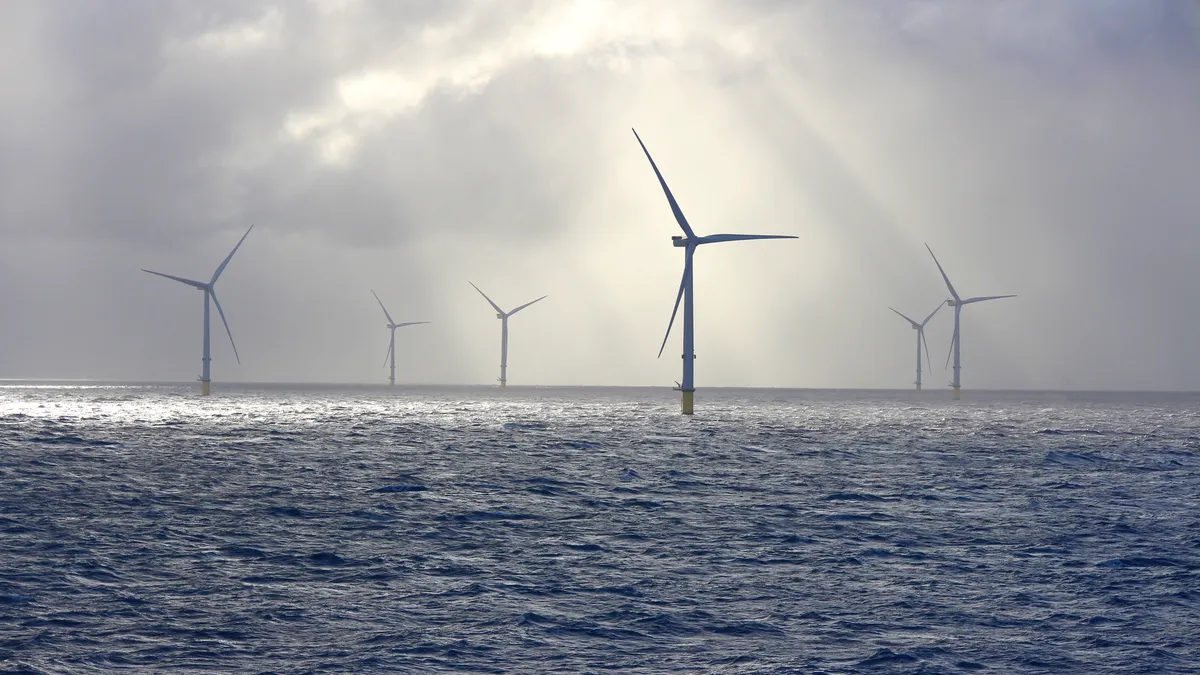Dive Brief:
-
Governors of 11 East Coast states have signed an agreement with the White House to launch a region-wide Federal-State Offshore Wind Implementation Partnership focused on growing a domestic offshore wind supply chain.
-
The partnership will serve as a forum for state and federal leaders to collaborate on solving issues such as workforce training, transmission and interconnection, port capacity and other priorities. The partnership could expand to include the West Coast and Gulf of Mexico, according to the White House.
-
Companies and trade groups praised the creation of the partnership, saying it should help to coordinate sometimes disjointed or redundant efforts across states pursuing offshore wind as both an environmental and economic development strategy.
Dive Insight:
After years of state-led efforts to establish offshore wind in the U.S., a new partnership among the White House and 11 East Coast states should further accelerate the creation of a domestic industry and supply chain, industry leaders say.
The Biden administration announced June 23 that it has joined Connecticut, Delaware, Maine, Maryland, Massachusetts, New Hampshire, New Jersey, New York, North Carolina, Pennsylvania and Rhode Island in an agreement that will see the partners sharing data and coordinating strategies on the development of an offshore wind industry on the U.S. East Coast.
State leaders have agreed to take a regional approach to workforce and economic development issues related to offshore wind, while the Biden administration has committed to facilitating timely permitting and identifying federal funding that could support the industry. All parties also agreed to develop “an offshore wind supply chain roadmap that identifies critical gaps and opportunities to meet state and federal offshore wind goals,” according to the White House announcement.
“I’m encouraged to hear the commitments today for a responsible permitting and review process that’s more efficient, and a lease auction process that incentivizes investments in the supply chain,” Ørsted Offshore North America CEO David Hardy said in remarks at an event marking the launch of the partnership. “These commitments will help alleviate some — not all — of the major obstacles in our path to rapidly building a U.S. offshore wind industry.”
Hardy noted that Ørsted has six commercial-scale offshore wind projects in the works across five states. However, a company spokesman said that only one of these projects has been fully approved due to the backlogged permit review process.
Beyond the pledge to accelerate the permitting process, the partnership has the potential to streamline the development of a domestic offshore wind supply chain, according to Sam Salustro, director of coalitions and strategic partnerships at the Business Network for Offshore Wind.
The network is tracking about a dozen projects that would expand U.S. capacity to supply offshore wind developers, but this won’t be enough to satisfy the demand anticipated to arise as a result of state and federal renewable energy goals, Salustro said.
“Global demand is skyrocketing, and there is a real concern that being dependent on supply chains overseas could put us really at risk,” he said. “Europe and Asia are moving just as fast as us, and if we don’t have our own capabilities, projects may be delayed because attention is diverted elsewhere.”
The partnership among states is especially critical, Salustro said, because to date, most state leaders have focused on ensuring their citizens receive the economic benefits associated with offshore wind. But these states need to be working together to create a viable offshore wind market in the U.S., Salustro said.
The New York Offshore Wind Alliance similarly praised the creation of the partnership. “As our forefathers discovered over two centuries ago, we do best as a Nation when we work together as one economic unit,” Fred Zalcman, director of NYOWA, said in a statement.














